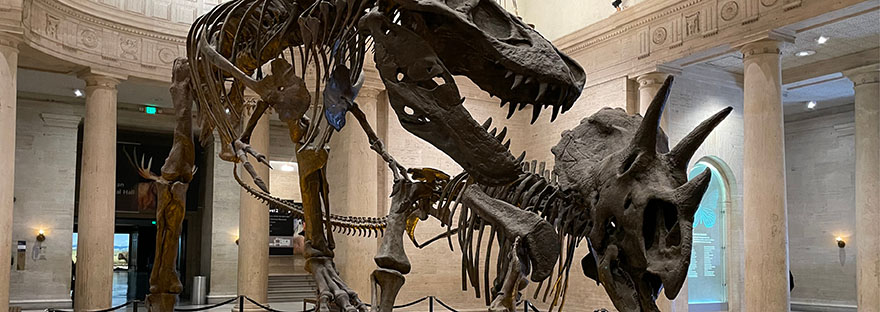by Katie Julius
Homeschoolers rejoice! Many of our beloved field trip destinations are welcoming back visitors (though things might look a little different than our last visit pre-pandemic).
Our first stop in our revived Out & About series is the Natural History Museum of Los Angeles. Our family recently visited, mostly as part of our study of California History.
BEFORE YOU GO
As with many venues, advance reservations are recommended. However, you are not able to utilize the free teacher ticket through the online system. (Yes, they honored my HSLDA membership card with photo ID). We skipped the online reservations and purchased tickets upon arrival.
One other word of advice before you head out, especially on a weekend – check the Colesium’s event schedule! We went on a Saturday when USC had a football game scheduled. Upside? There were lots of food vendors during the longer-than-planned walk from the parking lot. The main lot right next to the Museum was not accessible on game day so we had to park on the east side of the California Science Center. If you do go on a day when an event is taking place, save yourself some trouble and head straight to the entrance on Figueroa St. We made sure to tell the attendant that we were there for the museum since the parking sign read $35 for event parking (vs. $15 for museum visitors).
WHILE YOU’RE THERE
After we easily purchased our tickets at the entrance, we were reminded that we had to wear masks at all times. No gaiters are allowed. They did have blue disposable masks available for guests who did not have a mask that fit within their guidelines. We were on our way exploring.
My 9-year-old’s favorite exhibits were the dinosaurs, which was great since that was the main reason we were there. A word of caution, though. The signage in this area is heavy on evolutionary theory. We used it, however, as an opportunity to talk about what we believe regarding creation and when the dinosaurs existed and the reason they went extinct that aligns with biblical accounts (Answers in Genesis is a great resource for this if you believe in a young earth).
We then explored the “Becoming Los Angeles” exhibit, which was also a great fit for our study of California history. The exhibit presents artifacts in a chronological progression of the history of the City of Angels. It started with the Native Americans and includes all of the major periods – Spanish and Mexican rule, western town, orange groves, Hollywood, and more all while celebrating the diversity of the people who call and have called Los Angeles home. My daughter wasn’t as interested in this one as I was, but she did appreciate the large model of the city and some of the Hollywood pieces toward the end.
The gem and mineral displays were pretty extensive, and we enjoyed looking at the variety of gorgeous and sometimes unusual (at least to us) rocks. There was not a lot of “educational” content beyond the rocks themselves, save the one area that focused on gold – both in California and around the world.
It was now time for us to venture into the mammal and bird halls, especially with an animal-loving tween in tow. She was a bit disappointed that there were no live animals here, so we made our way pretty quickly through. With such incredible zoos throughout the Southern California area, it was a bit of a letdown for her to see just dioramas or taxidermied animals. She was much more interested in the few live animals (mostly bugs) that we found in the Discovery Center and Nature Lab. The Nature Lab was very intriguing as it featured different species that we would likely find in and around our backyard.
A Covid note: Many of the hands-on, interactive exhibits were not available. However, the touch screens in the dinosaur exhibits were working.
DON’T MISS
On special display on the second floor was the anglerfish that washed up on a local Southern California beach in May. This species is usually found in the deep ocean, so this is a pretty rare treat to be able to see such a pristine specimen. The website indicates it will only be on exhibit through November 29, 2021.
LAST TIPS
We were at the museum for just under three hours, which I thought would be enough time for the attention span of my daughter. However, she surprised me and was much more interested in most things than I had anticipated. There were some exhibits we did not spend as much time in as we would have liked and a few that we missed entirely. We are planning a return trip to catch some of what we missed, including the outdoor gardens!
The Los Angeles Natural History Museum is located in Exposition Park near the California Science Center, Coliseum, and across the street from the University of Southern California. The address is 900 Exposition Blvd, Los Angeles, CA 90007. Please check the website for current admission rates and any special exhibits available for when you plan to visit.
The information in this article is correct to the best of our knowledge at the time of publication. Please contact the venue directly to confirm hours, fees, current exhibits, and any other information that could impact your experience.


Great info, Katie!